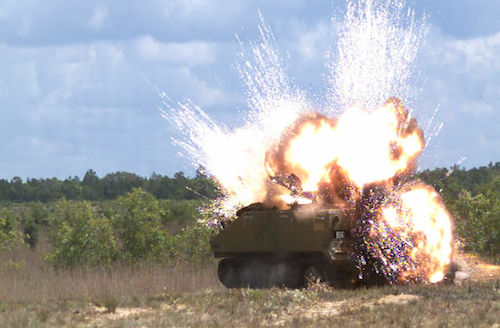US Steps Up Acquisition Of Precision Munitions
Contract awarded to fulfill demand for Advanced Precision Kill Weapon System.
28 October 2016
The US Navy has awarded BAE Systems a contract worth $600 million to fulfill the growing demand for Advanced Precision Kill Weapon System (APKWS) laser-guided rockets.
With an initial award of more than $130 million, the three-year, indefinite delivery / indefinite quantity contract will help speed the delivery of these precision guidance rockets to meet the needs of the US Navy, US Marine Corps, US Army and Air Force, as well as a growing number of allied nations.
“This latest contract includes valuable provisions that allow other services and allies to leverage this small guided munition program of record,” said David Harrold, director of precision guidance solutions at BAE Systems. BAE Systems has invested in a new facility in New Hampshire, which is optimised for precision guidance solutions and designed to meet a significant increase in production.
The company expects it will be able to ramp up production to 20,000 APKWS guidance units per year with potential for additional growth.
Challenged by budget constraints and increasingly urban battlefields, militaries around the world are seeking cost-effective, precise weapon systems that limit collateral damage.

Built around BAE Systems’ proprietary Distributed Aperture Semi-Active Laser Seeker technology, with a mid-body guidance section that fits between the motor and the warhead, the APKWS solution easily transforms a standard unguided 2.75-inch (70 mm) munition into a highly accurate precision laser-guided rocket. BAE Systems says this design requires no modifications to the rocket, launch platform, or launcher system, and it allows militaries to leverage existing infrastructure and munitions investment with minimal effort and training.
The APKWS laser-guided rocket's accuracy and advanced modular design, makes it exceptionally versatile for addressing various mission sets and allows for streamlined deployment on a variety of platforms. The system has already been qualified or demonstrated on more than 14 rotary- and fixed-wing platforms.